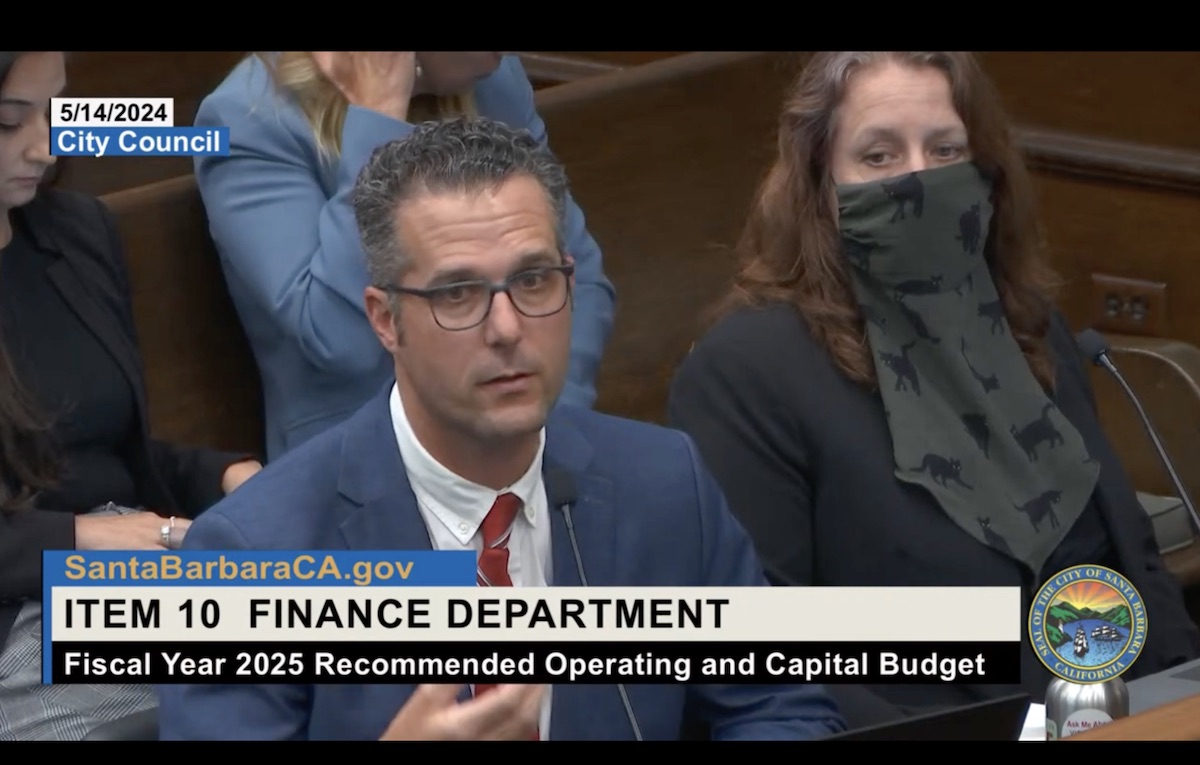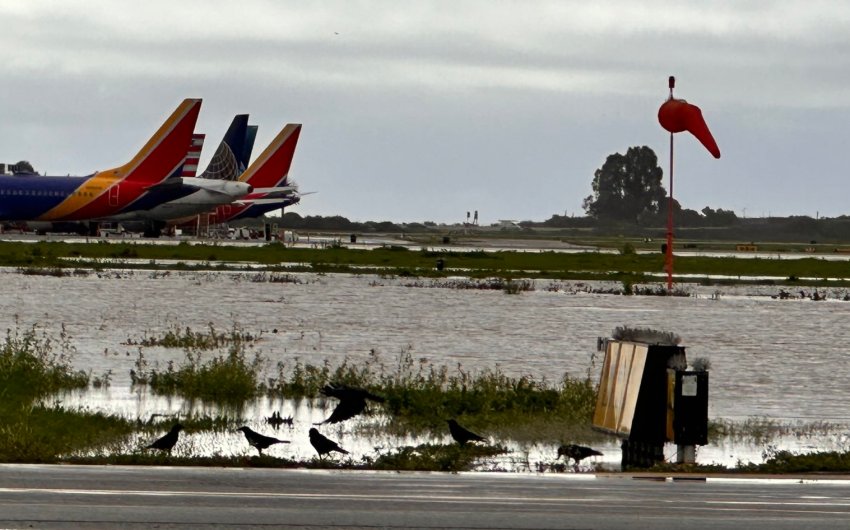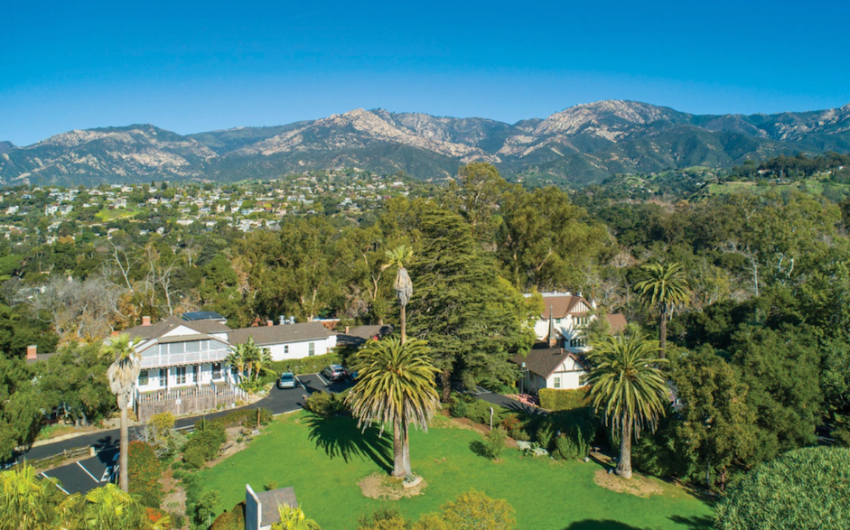Budget Season Underway in City of Santa Barbara
City Council Tackles Projected $7.1 Million General Fund Deficit, Department by Department

The Santa Barbara City Council began its annual budget deliberations this week with an overview of the city’s general fund, which after accounting for a projected $216.2 million in revenues and $220.3 million in expenditures, is expected to leave the city with a deficit of at least $7.1 million for fiscal year 2025.
Finance Director Keith DeMartini and Budget Manager Natalija Glusac ran through the numbers for the council, department by department, highlighting major changes that were being implemented to help the city battle a gloomy forecast with growing costs continuing to outpace slowing revenues.
Part of the problem has been the steady increases in salary and pension costs. In 2023, the city spent $75.6 million on salaries and $46 million in benefits. By 2024, salaries had ballooned to more than $86 million and benefits to $55.7 million. Coupled with inflation, increases in operating and maintenance costs, and the collapse of the city’s Downtown Parking Fund, the cost of doing business keeps growing annually. In 2022, the city’s total expenditures were $165 million, compared to a projected $220.3 million next year.
Revenues, on the other hand, are growing, but not fast enough to keep up with increased costs. Property taxes account for 24 percent of the city’s general fund revenues, with a projected 51 million in 2025, up from $46 million in 2023. Measure C sales tax is projected to bring in $33.4 million in 2025, while transient occupancy taxes are expected to net the city at least $28.7 million.
Earlier in the day, the city’s Finance Committee was split on the idea of a ballot measure to allow voters to decide on a proposed half-cent sales tax increase that the finance department estimated might bring in $15 million a year toward public services and city maintenance. After much deliberation, the three members of the finance committee agreed to move the item to a future date for full council deliberation, but the group did not explicitly recommend that the council approve the ballot initiative.
“We have to be careful adding another tax to our community members when we are not working at full capacity,” said Councilmember Alejandra Gutierrez, chair of the Finance Committee.
Councilmembers were supportive of trying to find new ways to make up for lacking revenue. In the Community Development Department, which brings in $7.9 million in revenues but costs more than $17 million, the council suggested exploring higher “in lieu” fees for developers, or a vacancy fee for empty commercial spaces.
Councilmember Kristen Sneddon said that the current fees were “egregiously low” and are not enough to actually offset the need for affordable housing. For commercial vacancies, she suggested something closer to a “community benefit fee” than a vacancy tax, which city staff said would be harder for the city to enforce.
“Either put something in your windows, open it up to nonprofits, or pay a hefty fee,” Sneddon said.
The city’s Fire Department is projected to cost nearly $40 million in 2025, with salaries taking up $20 million and benefits expected to cost $13.9 million. The Police Department, which has been dealing with challenges in recruitment, is expected to cost $58.8 million in 2025. In total, the city is expected to spend more than $48.8 million of that budget on police salary and benefits.
Nearly every department attempted to find places to save money by cutting services or increasing fees. Parks and Recreation, which is expected to bring in $7.9 million to the general fund against $25.5 million worth of expenditures, was forced to increase the costs for some recreation programs to bring in an extra $125,000, while also reducing park maintenance funding by $32,000 next year to keep the city from having to cut junior high after school sports programs.
The city is also undertaking a wave of capital projects from 2024 to 2025 that will be funded through the general fund and Measure C sales tax dollars. This includes $4.7 million in projects through the general fund, and more than $78 million in Measure C projects over the next two years, from the State Street plaza redesign to electric vehicle infrastructure to dozens of upgrades to the city’s libraries, parks, and streets.
No action was taken, and the council will continue budget deliberations with a special meeting on the Downtown Parking Fund, followed by a budget work session for the city’s enterprise funds. To view the current Fiscal Year 2025 Recommended Budget, visit the city website.
Premier Events
Tue, Dec 31
5:00 PM
Santa Barbara
New Year’s Eve Dinner
Tue, Dec 31
6:00 PM
Santa Barbara
Gin + Jazz New Year’s Eve Celebration at El Encanto
Tue, Dec 31
6:00 PM
Santa Barbara
Early NYE at Corks with Guilty Pleasure Boys
Tue, Dec 31
6:30 PM
Santa Barbara
Alternative New Year’s Eve
Tue, Dec 31
7:30 PM
Santa Barbara
Ecstatic New Year at Yoga Soup
Wed, Jan 01
10:30 AM
Santa Barbara
New Years Day Retreat
Fri, Jan 03
6:00 PM
Santa Barbara
Flow’s 1st Friday Tea Social- Stuff Swap
Fri, Jan 03
7:00 PM
Santa Barbara
Barrel Room Sessions ~ Live Music & Empanadas at Carr Winery
Fri, Jan 03
9:00 PM
Santa Barbara
Film Screening: The Beatle’s “A HARD DAYS NIGHT”
Sat, Jan 04
11:30 AM
Santa Barbara
Crafternoon: Sustainable Stagecraft
Tue, Dec 31 5:00 PM
Santa Barbara
New Year’s Eve Dinner
Tue, Dec 31 6:00 PM
Santa Barbara
Gin + Jazz New Year’s Eve Celebration at El Encanto
Tue, Dec 31 6:00 PM
Santa Barbara
Early NYE at Corks with Guilty Pleasure Boys
Tue, Dec 31 6:30 PM
Santa Barbara
Alternative New Year’s Eve
Tue, Dec 31 7:30 PM
Santa Barbara
Ecstatic New Year at Yoga Soup
Wed, Jan 01 10:30 AM
Santa Barbara
New Years Day Retreat
Fri, Jan 03 6:00 PM
Santa Barbara
Flow’s 1st Friday Tea Social- Stuff Swap
Fri, Jan 03 7:00 PM
Santa Barbara
Barrel Room Sessions ~ Live Music & Empanadas at Carr Winery
Fri, Jan 03 9:00 PM
Santa Barbara
Film Screening: The Beatle’s “A HARD DAYS NIGHT”
Sat, Jan 04 11:30 AM
Santa Barbara






















